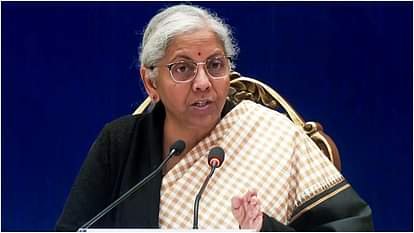Budget 2025: Agriculture, MSME, household consumption and employment generation expected to be prioritized in the budget

New Delhi| What announcements will the Finance Minister make for which sector in the upcoming budget and will the common man get relief from inflation or will the tax burden increase. At present this remains a big question. Experts have also put forward their demands before the government. Market experts hope that the budget will focus on measures to make India a developed economy that reflect the government’s commitment to inclusive growth. Agriculture, MSME, domestic consumption and employment generation are expected to be given priority in the budget. Experts estimate that special attention will be given to measures promoting household expenditure.
The market expects from the budget of experts
Deepak Ramaraju, senior fund manager, Shriram AMC, says GDP growth recently fell to a 7-quarter low of 5.4 per cent in Q2 FY25. It is expected that for this the government will give priority to policies promoting development in this budget. Financial assistance can be provided especially to low-income people. The key areas of focus in the budget are likely to include investment in infrastructure development, sustainable energy initiatives, promotion of manufacturing sector and sustained expenditure on defense and railways. All these sectors can play an important role in promoting economic growth and increasing the demand for SMEs. He said that the government can also increase disposable income in this budget with a focus on increasing expenditure on social sectors like healthcare and housing, direct tax slabs and simplified tax structure. From a market perspective, there is a need to strike a balance between growth-oriented spending and treasury in the budget. A growth-oriented budget is necessary, but the government may take precautions in case of populist measures, as such decisions could increase the fiscal deficit and further weaken the rupee, thereby delaying economic recovery by limiting rate cuts. Pressure on the treasury indicates slowing down of growth which can lead to selling in the market.
The need to adopt the characteristics of developed economies
If India wants to become a truly “developed India” by 2047 and a developed economy in addition to having the best defense capabilities, the country needs to adopt the characteristics of developed economies such as efficient public markets as well as free currency, says Jimit Modi, founder of Samco Securities. As far as public markets are concerned, a few years ago India was an excellent market on all fronts. There was more liquidity in the market and on that basis our markets were enjoying higher premiums than other emerging markets. But India’s premiums have suffered a setback compared to other emerging markets due to the steps taken in the last two years on the taxation front and regulatory front in the Budget and beyond. This has affected the liquidity of the market.
The chain of regulatory action on the equity derivatives segment of the Indian capital market and the increase in Securities Transaction Tax (STT) across sectors have reduced market liquidity by 30-40 per cent compared to earlier periods. Therefore, currency and derivatives markets should be opened as it is important for the Indian economy to become a developed economy. To maintain liquidity in the capital markets, the government should rationalize STT rates on futures, options and other instruments. This may cause some loss of revenue to the government, but this will be offset by new inflows coming through increased liquidity and increased participation.

The great challenge of striking a balance in promoting capital expenditure and consumption
Dheeraj Reilly, MD & CEO, HDFC Securities, said India’s real GDP growth is projected to decelerate from 8.2 per cent in FY23-24 to 6.4 per cent in FY24-25 amid a slowdown in urban demand and investment activity. The central government is likely to be around Rs 1.4 trillion short of its capital expenditure target this fiscal year, which is likely to lead to a 4.8 per cent expected fiscal deficit in FY2025, well below the 4.9 per cent set in the budget. Therefore, the Finance Minister faces the big challenge of striking a balance in continuously encouraging capital expenditure and consumption to maintain the pace of development of the country in the upcoming budget. Given the government’s commitment to inclusive growth, the budget is expected to give priority to agriculture, MSMEs, domestic consumption and employment generation. Special attention will be given to measures to boost domestic spending, which accounts for more than half of India’s GDP. We expect the budget to strike a careful balance between consumption incentives and targeted infrastructure spending to achieve development objectives.
The market expects the government to give priority to agriculture, MSMEs, domestic consumption and employment generation in the inclusive growth agenda in the budget this year. The share of domestic expenditure in the country’s gross domestic production i.e. GDP is more than half, hence the proposed measures to encourage consumption will be monitored. If the budget takes initiatives to boost private consumption expenditure, which remains below pre-Carona pandemic levels, it could impact consumer spending in both urban and rural areas.








